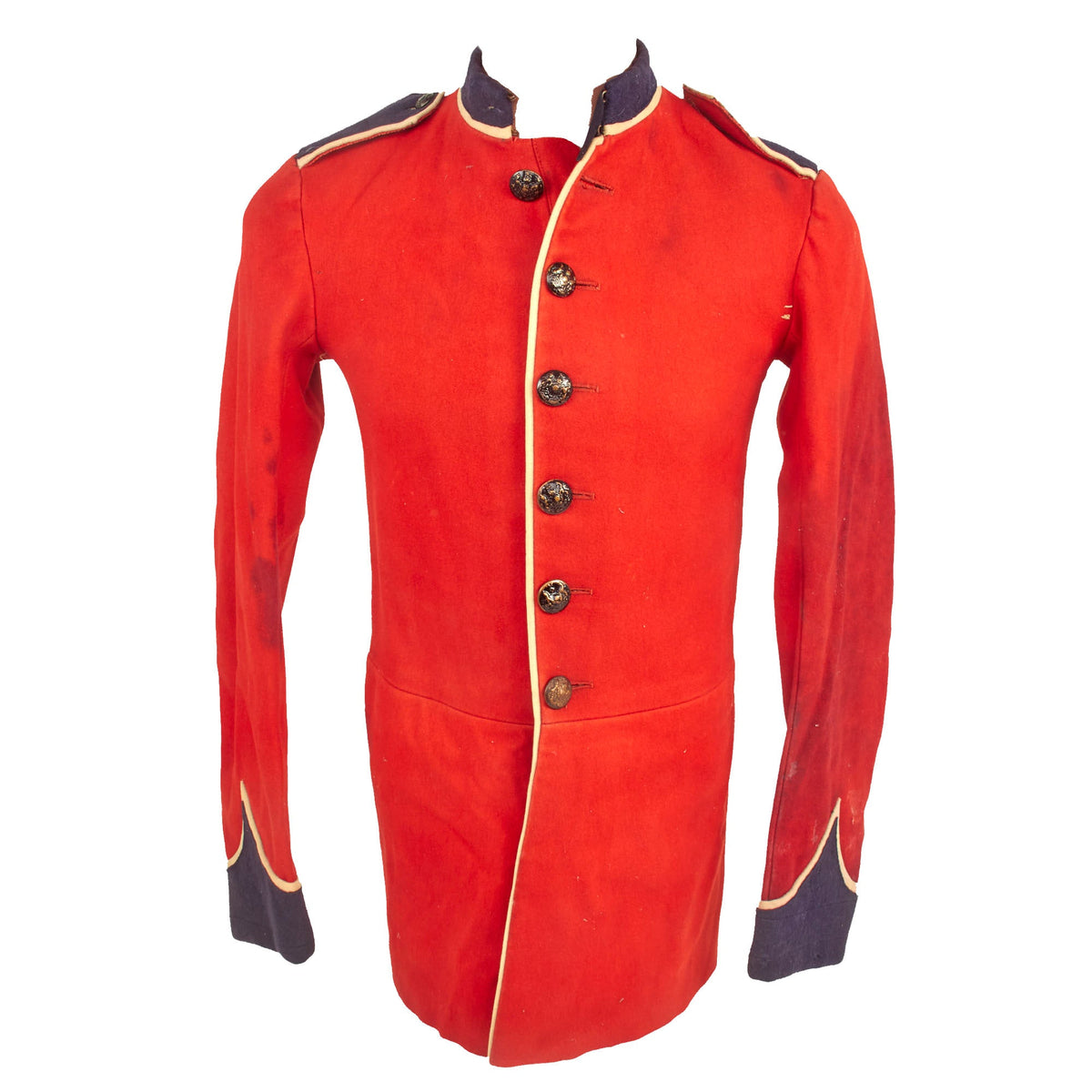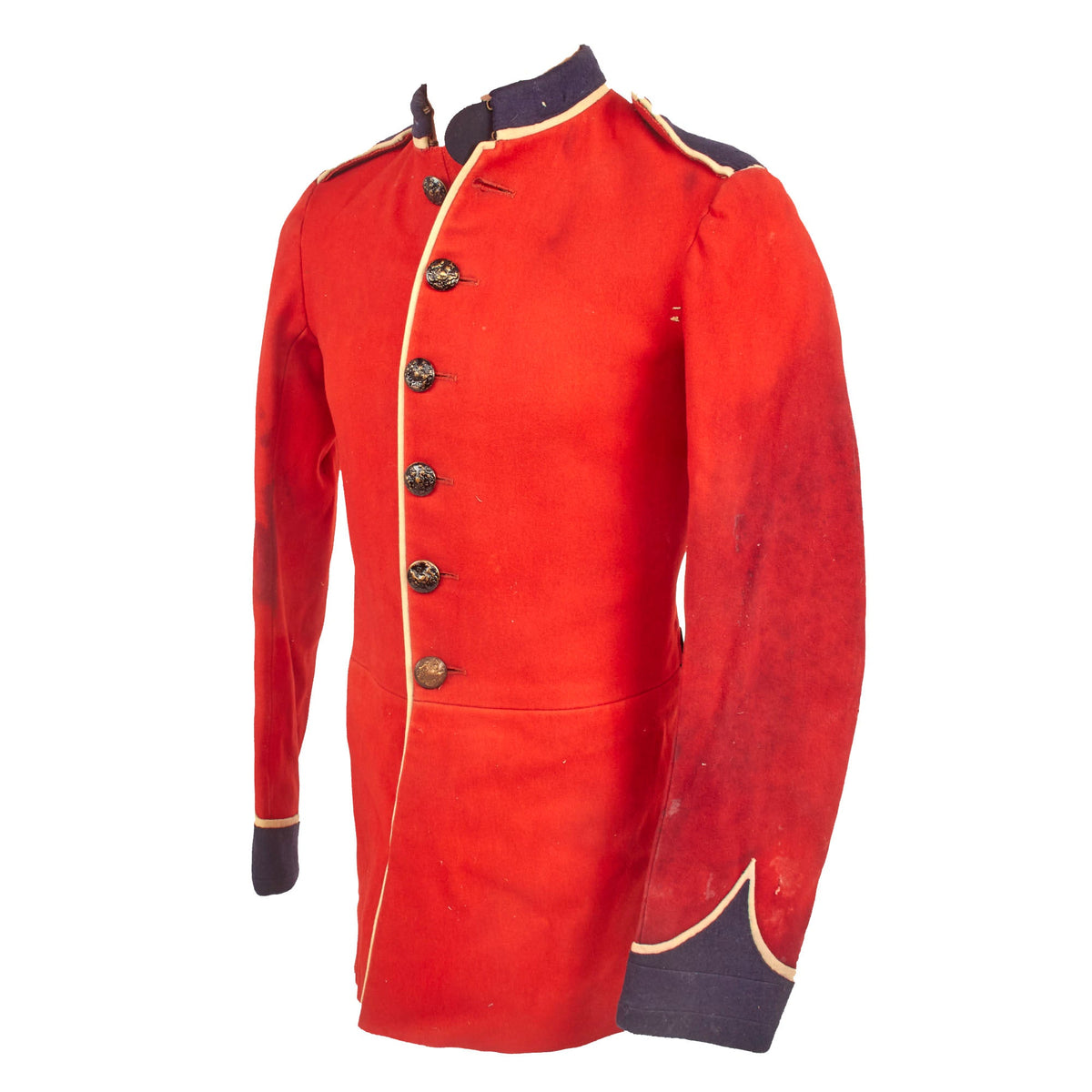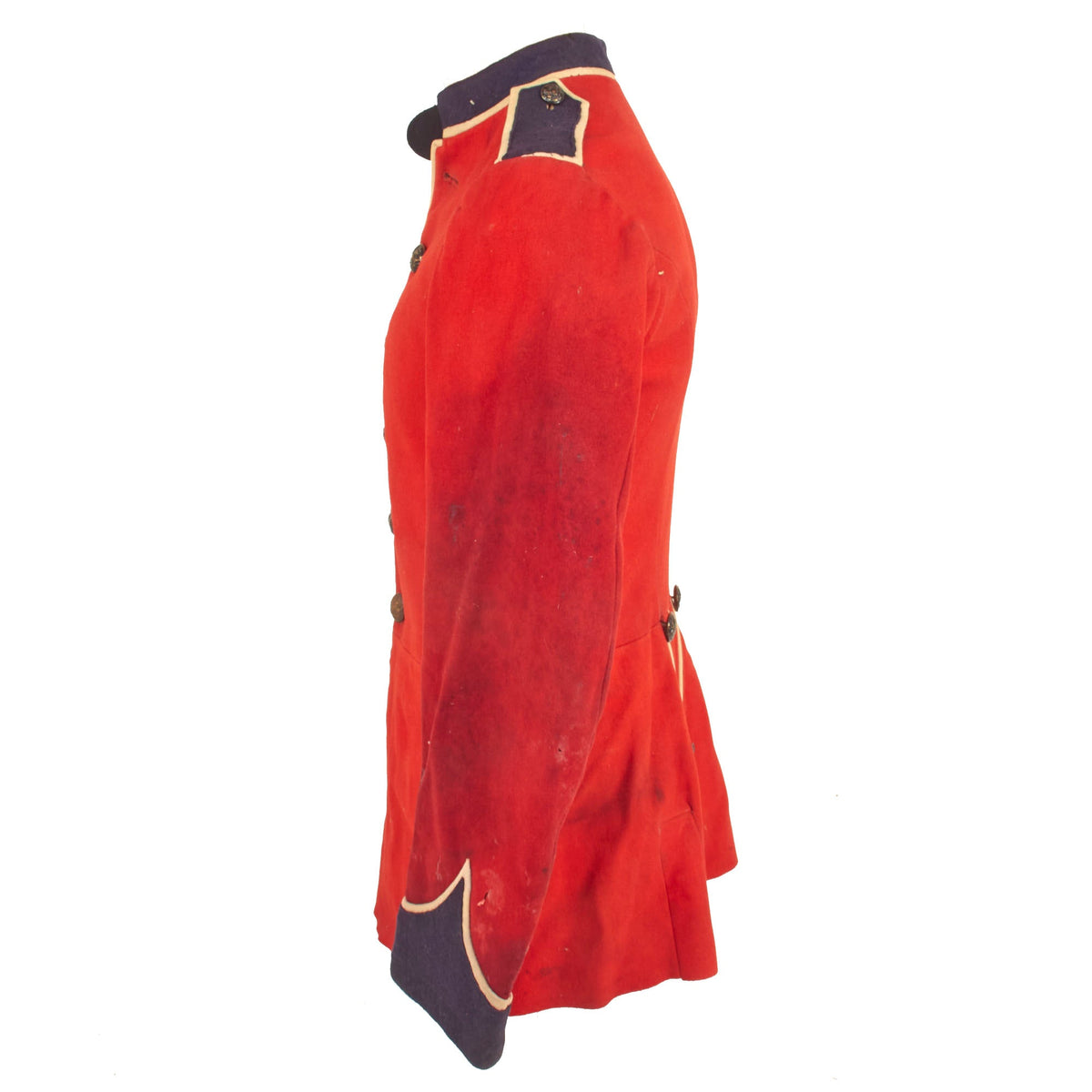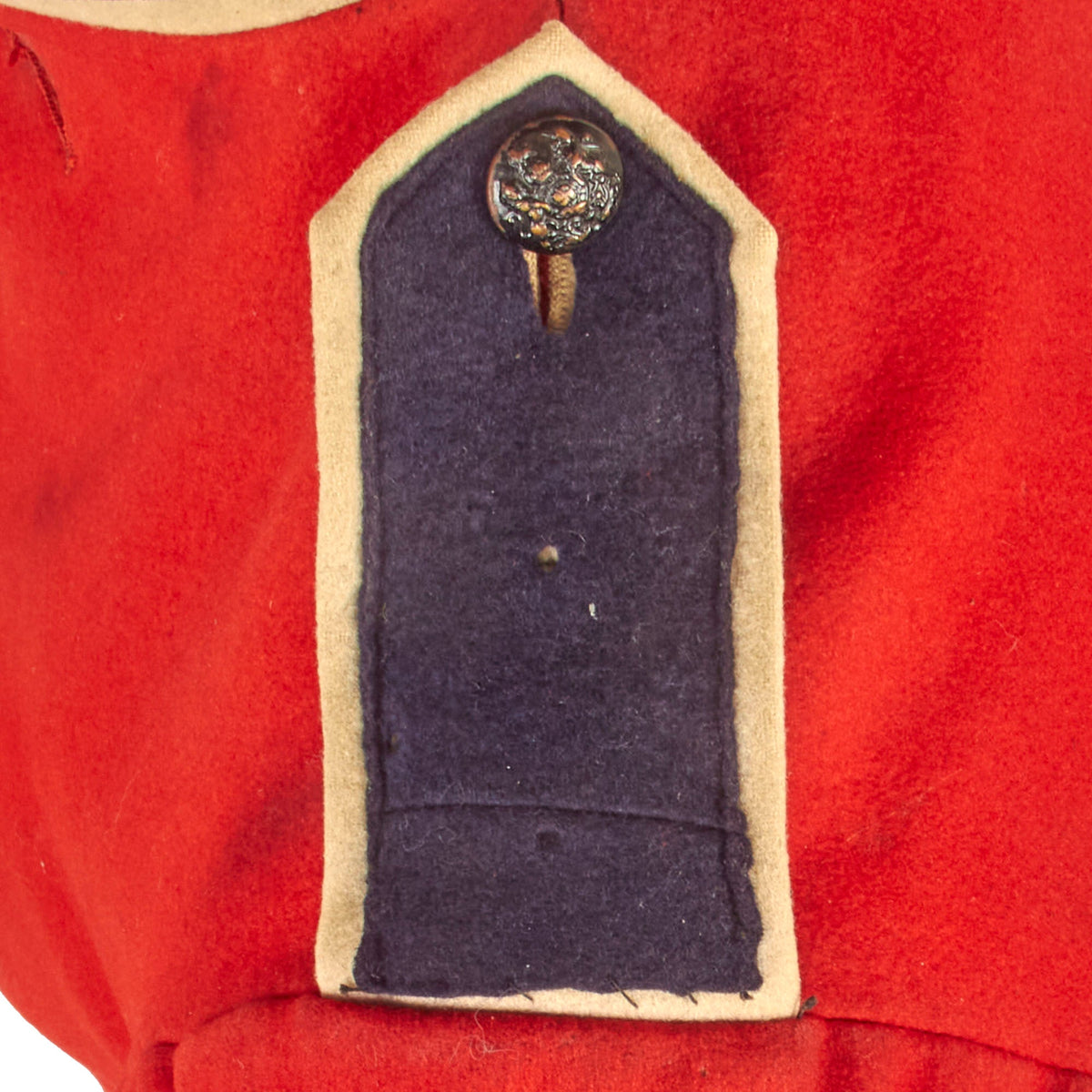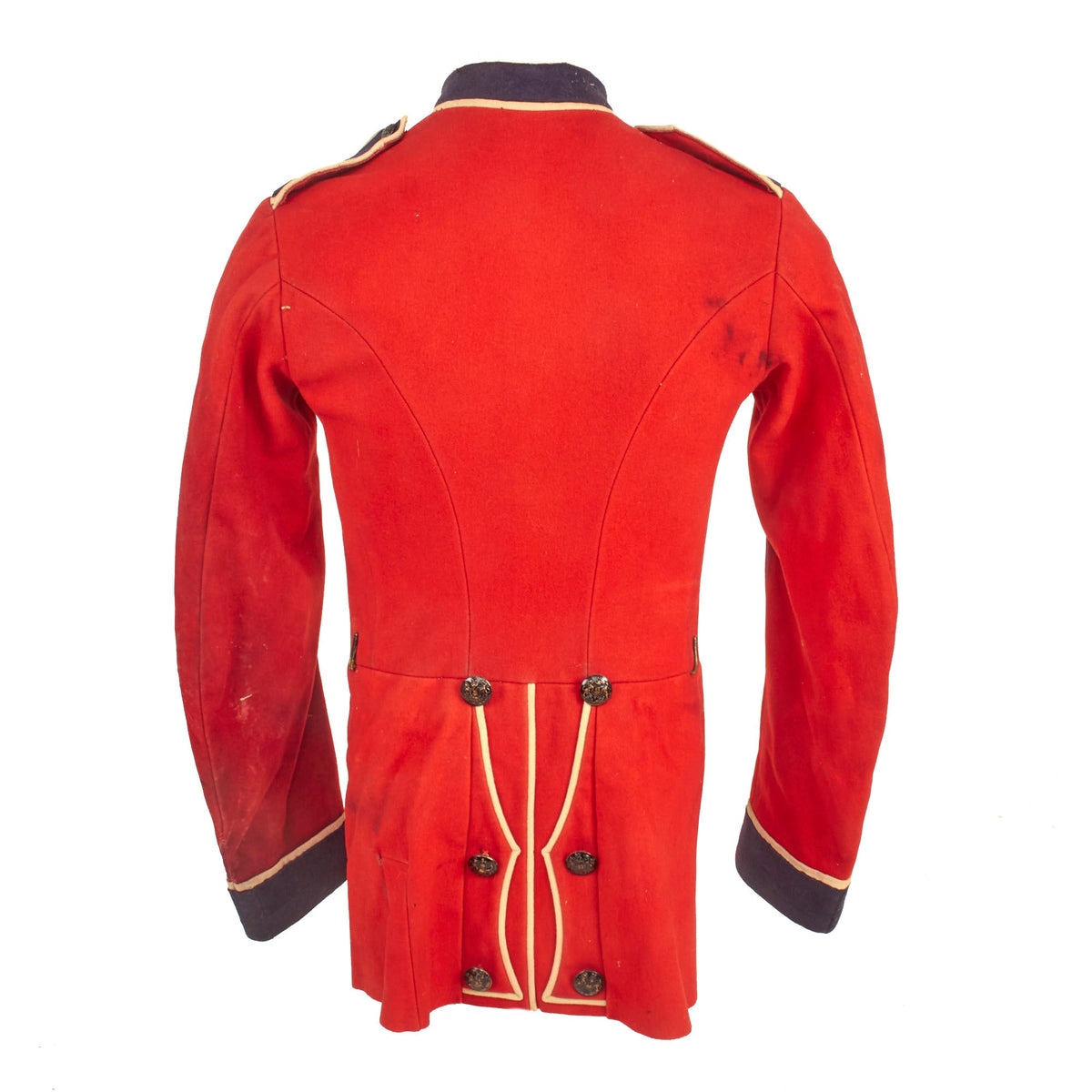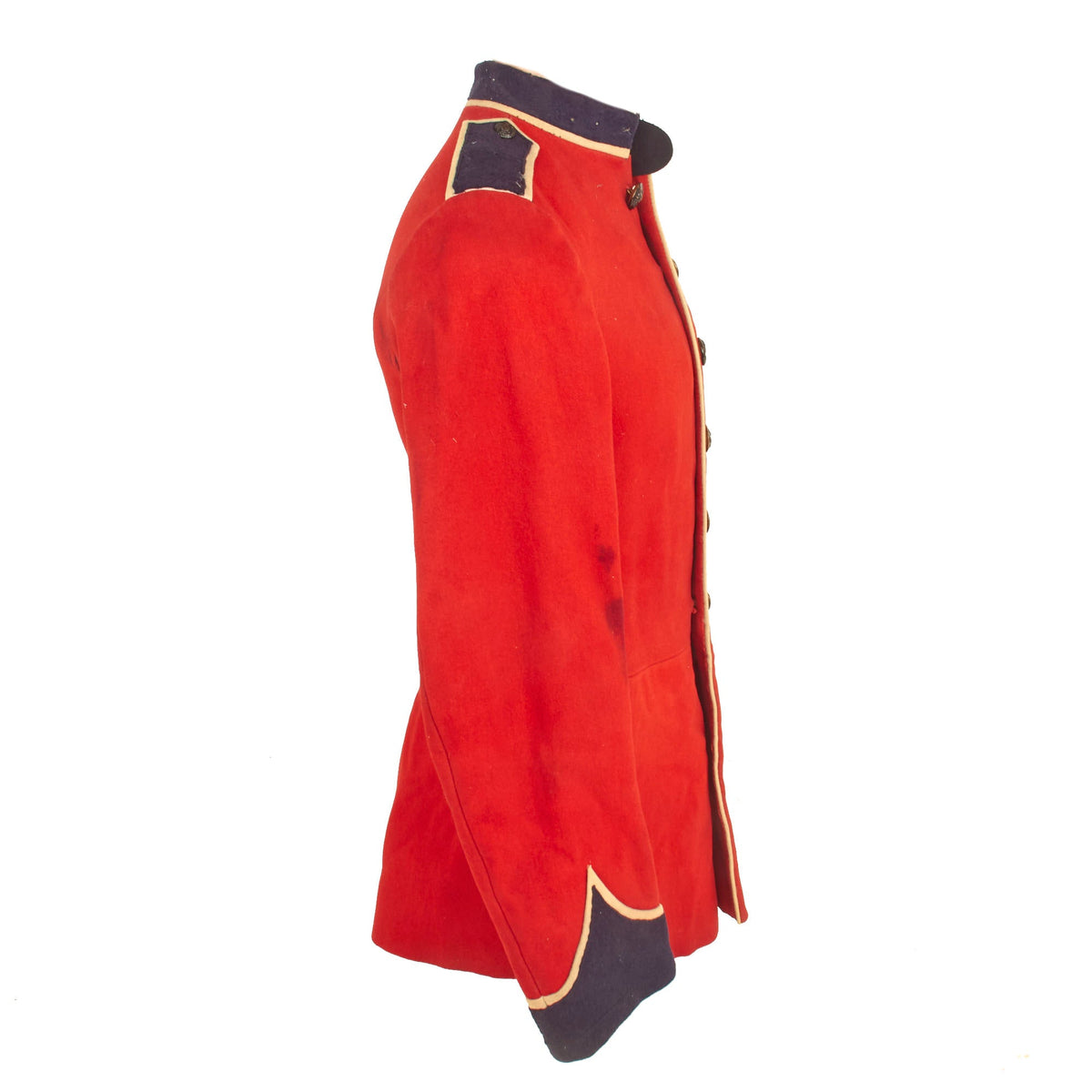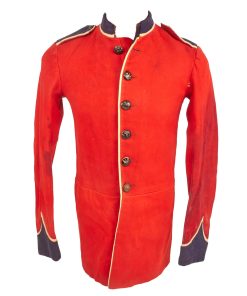Original British Late Victorian to Pre WWI Era Regimental Scarlet Tunic – Marked As Being “Property of Aldershot Tattoo” Original Items
$ 250,00 $ 100,00
Original Item: Only One Available. Red coat or scarlet tunic was a military garment used widely, though not exclusively worn, by most regiments of the British Army, Royal Marines, and some colonial units within the British Empire, from the 17th to the 20th centuries. The scarlet tunic continues to be used into the 21st century, with several armed forces of the Commonwealth of Nations adopting them as their full dress and mess dress uniforms. The uniform and term “redcoat” may have originated in 16th century Tudor Ireland as a derogatory term for the British, as British soldiers in Lord Lieutenant of Ireland’s army wore red coats, the first time English and Scottish soldiers under English command and later British collectively had a red uniform. The term was then brought to America and Europe by Irish emigrants.
From the mid-17th century to the 19th century, the uniform of most British soldiers (apart from artillery, rifles and light cavalry) included a madder red coat or coatee. From 1873 onwards, the more vivid shade of scarlet was adopted for all ranks, having previously been worn only by officers, sergeants and all ranks of some cavalry regiments.
The tunic is a fine example of an “Other Ranks” scarlet coat and is constructed of kersey wool with an off white kersey wool lining. The coat is secured by 6 General Service buttons with matching buttons on the shoulders and the tails on the back, all of which were repainted black at some point. The inside shoulders bear the stamp PROPERTY OF THE ALDERSHOT TATTOO in multiple spots.
Aldershot is known as the “Home of the British Army”, a connection which led to its rapid growth from a small village to a Victorian town.
The Aldershot Military Tattoo was an annual event dating back to 1894. In the 1920s and 1930s, the Aldershot Command Searchlight Tattoo held at the Rushmoor Arena presented displays from all branches of the services, including performances lit by flame torches. At one time the performances attracted crowds of up to 500,000 people.
The Tattoo was organized to raise money for military charities. By the end of the 1930s the event was raising around £40,000 annually. The Tattoo’s modern format, the Army Show, was canceled in 2010 by the Ministry of Defence due to budget cuts. It was briefly revived the following year and attracted 20,000 visitors. In 2012, it was styled as the Aldershot Garrison Show, a smaller free event held on Armed Forces Day.
The Army Show was replaced in 2013 with a general Military Festival. Events were held across the town, including an art exhibition, live music, sports events and film screenings.
Comes more than ready for further research and display.
Approximate Measurements:
Collar to shoulder: 8.5″
Shoulder to sleeve: 26”
Shoulder to shoulder: 14”
Chest width: 16.5″
Waist width: 15″
Hip width: 17″
Front length: 31″
Fast Shipping with Professional Packaging
Thanks to our longstanding association with UPS FedEx DHL, and other major international carriers, we are able to provide a range of shipping options. Our warehouse staff is expertly trained and will wrap your products according to our exact and precise specifications. Prior to shipping, your goods will be thoroughly examined and securely secured. We ship to thousands clients each day across multiple countries. This shows how we're dedicated to be the largest retailer on the internet. Warehouses and distribution centres can be located throughout Europe as well as the USA.
Note: Orders with more than one item will be assigned a processing date depending on the item.
Before shipping before shipping, we'll conduct a thorough inspection of the items you have ordered. Today, the majority of orders will be delivered within 48 hours. The delivery time will be between 3-7 days.
Returns
The stock is dynamic and we cannot completely manage it because multiple stakeholders are involved, including our factory and warehouse. So the actual stock may alter at any time. It's possible that you may not receive your order once the order has been made.
Our policy is valid for a period of 30 days. If you don't receive the product within 30 days, we are not able to issue a refund or an exchange.
You can only return an item if it is unused and in the same state as the day you received it. You must have the item in its original packaging.
Related products
Uncategorized
Uncategorized
Uncategorized
Uncategorized
Uncategorized
Uncategorized
Armoured Fighting Vehicles of the World: AFVs of World War One (Hardcover Book) New Made Items
Uncategorized
Uncategorized
Uncategorized
Uncategorized
Uncategorized
Uncategorized
Uncategorized
Uncategorized
Uncategorized
Uncategorized
